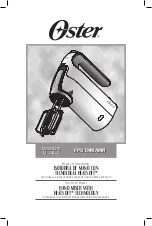
DS1068-020B
30
LBT20769
5.3
HOW TO ENTER ALPHANUMERIC CHARACTERS
The keypad can be used to enter alphanumeric characters to store descriptive names for users, zones, outputs etc. Each name c an
be up to 24 characters long. Press the keys to select several characters cyclically as shown on the following table. A cursor will blink
on the display at the entry point of the new character.
To write a name during user configuration:
1.
Press the key associated to the required character until it appears;
2.
Use the key associated with the symbol
and the key associated with the symbol
to go to the previous or next string position (use
the “0” key to delete characters in excess);
3.
Finally, press the key
to save the name or to delete everything;
4.
Press the key
to delete what has been entered or to quit the procedure.
Key
Character
Key
Character
1
. , : ; ! ? / 1
7
P Q R S p q r s 7
2
A B C a b c 2
8
T U V t u v 8
3
D E F d e f 3
9
W X Y Z w x y z 9
4
G H I g h i 4
*
*
* " $ & ' ` { } | (characters available only for
password and WiFi network name)
5
J K L j k l 5
0
[space] + - ( ) % 0
[space] + - ( ) % = ~ 0 (characters available
only for password and WiFi network name)
6
M N O m n o 6
#
#
# < > @ [ ] \ ^ _ (characters available only
for password and WiFi network name)
5.4
ENABLING AND DISABLING
Installers and normal users must be enabled to operate on the system. Only the Master user is always enabled. The Master can
enable and disable the other users and the electronic and proximity keys and can enable and disable particular system functions.
The procedure for enabling and disabling users and key is described in detail below. During programming, users and keys are
configured, i.e. it is specified what they can do. However, these "capabilities" are put on-hold until someone, namely the Master User,
authorises them to use them.
Similarly, the Master User can revoke the authorisation and put the "capabilities" back on-hold at any time. Enabling and disabling
means authorising and revoking authorisations.
It is important to note that disabling does not means deleting the configuration made during programming but simply suspending it.
Indeed, by enabling a previously disabled User or key (electronic or proximity) these will immediately reacquire all their "capabilities".
The User code and key enabling and disabling procedures are very useful particularly in combination with the time
scheduler to permit entry restricted in time to the protected rooms.
An example will help understanding the concepts of configuration, programming, enabling and disabling in greater detail.
Everyone of us has many keys: to open the gate, the garage door, the front door, the car, the basement, the utility room, the bicycle
lock etc. Each key lets you open or use something. In an alarm system, you have functions which let you do something instead of
keys.
A set of keys can be put on a key ring and each key ring will allow to do some things and not others. For example, we could m ake one
set with the garage key and the bicycle padlock key and another set with the garage key and the car key. Both sets of keys will open
the garage but the vehicle you can use will be different. Configuration is the equivalent for the set of keys and programming is the
procedure used to make each set.
The enabling and disabling actions used for the alarm system are equivalent to giving the keys to someone or taking them away.
Enabling and disabling applies to other functions in the system, and not only users and keys. The functions can be easily made
operational or not without needing to program the configurations again.
















































